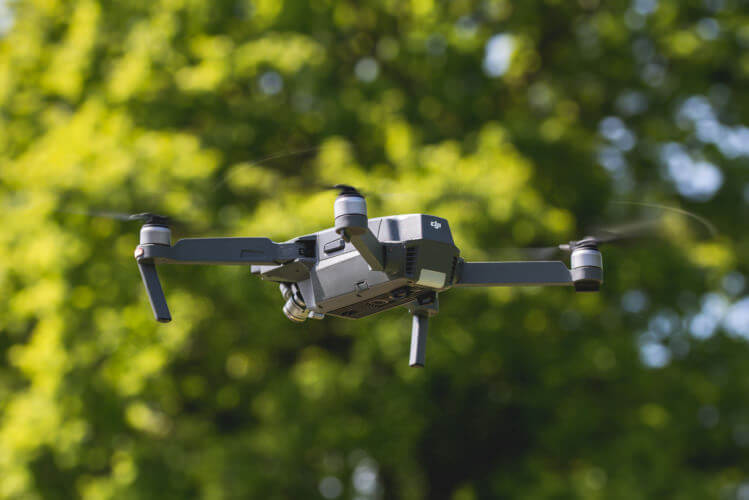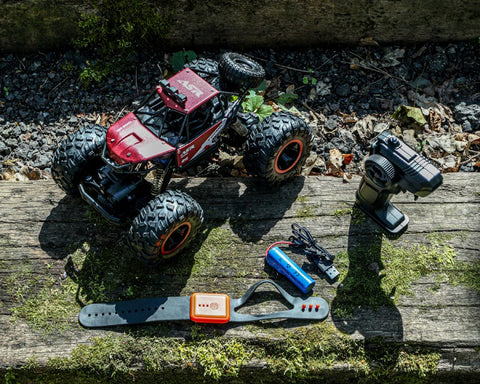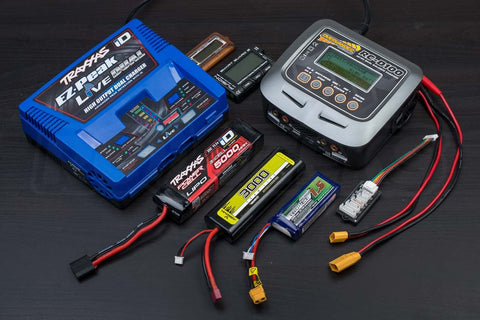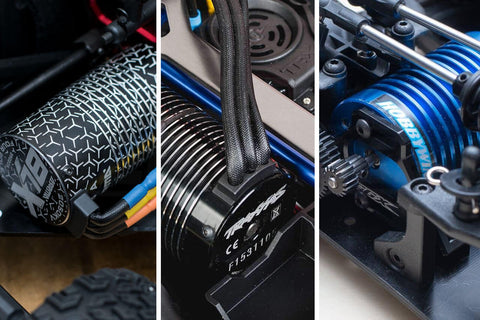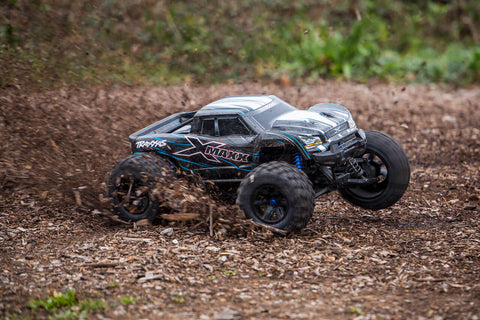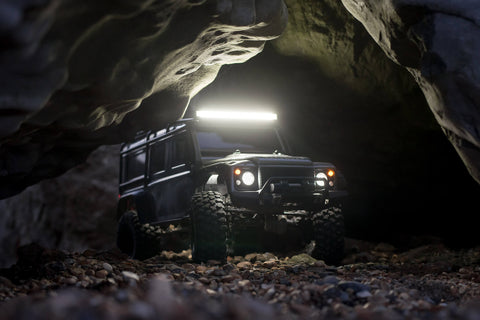Three of our drone experts review the DJI Mavic Pro. Between them, our staff have years of experience flying a wide range of quadcopters. Following a few months testing the DJI Mavic Pro, we sat down with them to ask their opinions on the new drone. Interested in finding out about the DJI Mavic Pro itself? Learn more about the craft in our unboxing blog, or order your Mavic Pro here.










Pilot's Perspective with Phil

Flight Dynamics
It's flight characteristics are very similar to that of the DJI Phantom series which is great. I particularly enjoyed the Tripod mode which limits your max speed to 2.2mph, now i know that doesn't sound exciting but I can see it being very handy for doing super slow tracking shots which in general are hard to achieve using small drones. The sport mode was a blast as well. Comparing it to the Phantom 4 in sport mode, i'd choose the Mavic as it can reach similar speeds but it is more agile due to its reduced weight meaning it has less momentum to counteract when making sharp turns.Control Range
DJI are claiming a very impressive 7km (4.3 mile) transmission range. However to keep within UK rules and regulations, whether you are operating commercially or for fun, the CAA state that you cannot fly the aircraft further than 500 meters from the operator and you must also keep direct line of sight. Due to the small size of the Mavic, it would become to small of a dot in the sky to see at just 4000 meters.
Advanced Flight Modes
Alongside the intelligent flight modes such as TapFly and Active track that we saw in the Phantom 4, the Mavic has a new gesture feature is pretty fun, allowing you to activate Active Track or take a 'drelfie' (drone selfie) by gesturing with your arms. In practice, it worked surprisingly well. The WiFi mode is another new feature that the Mavic has allowing you to operate the drone with just your phone - for more this check out our Flying the DJI Mavic Pro with Smartphone WIFI blog post.Portability
I'm sure I don't need to drone on about how small it is but...It's so small! Everything! The aircraft, the controller and 3 batteries (giving you a total of 1 hour flight time) all fits into the small bag that comes with the Fly More Combo pack. With this size of portability you can effortlessly take it anywhere, whether its in in your backpack when your hiking or just keeping it the glove compartment of your car.
Use for Commercial Applications
Personally, I wouldn't use it for commercial purposes. With that kind of price point I think I'd opt for the Phantom 4 Pro, but for personal use where travelling with it and taking photos and video for my own use and to share online, I'd definitely get the Mavic because of it's so small and convenient.Photographers Point of View with Tom

Image Quality
Much as with modern Apple devices, the 'Pro' moniker in the name can be a little misleading. The sensor itself produces fairly average images, obviously a long way from the MFT sensor on the Zenmuse X5 but notably worse than the Phantom 4 Advanced/Pro (although I feel it doesn't suffer from that 'oversharp' feeling the Phantom currently offers). Also reducing the sensor size to fit the tiny gimbal has limited its low-light performance (indeed its max ISO is much lower than the Phantom) pushing past ISO 400 introducing what I would consider a lot of artefacting. I found shooting in RAW/Cine and setting a manual or cloudy white balance gave the best results. Don't make the mistake I did of knocking the sharpness right down (negative value) assuming you will deal with it in post, the Mavic Pro likes to increase its noise reduction without any sharpening running meaning you lose a lot of detail in any shadow areas.Portrait Mode
One feature that I do like (that I hope gets transferred to the bigger drones) is the portrait capture mode. This physically rotates the camera (See the image below) so the sensor is in a vertical instead of a horizontal plane. This is the first drone I have seen that provides this and it offers a new perspective when taking shots, especially from 3/4 down. It's a particularly helpful feature when dealing with the low MP image sensor and wanting to create a detailed panorama. Plus with so many people now consuming their media on tablets and smartphones in a vertical orientation, I feel it is useful to be able to create vertical videos for platforms like Instagram.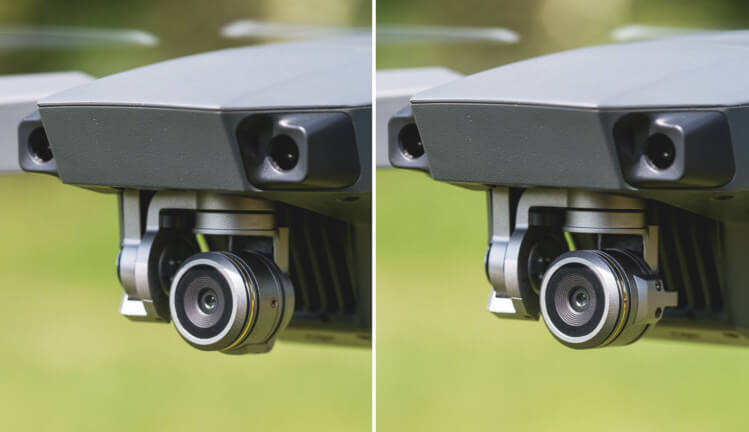
Advanced Flight Modes make life easier
I'm not a pro pilot so the new advanced flight modes the Mavic Pro provides makes positioning the drone for shots a whole lot easier. Tripod mode effectively numbs the controls to allow fine adjustment to frame the shot or for a slow tracking/pan shot (perfect when wearing gloves on a cold day). Profile mode assists in tracking shots, 'dolly-ing' the drone alongside a selected object whilst Trace will act in a similar manner but following the target and yawing to keep it in the centre; Both will adjust the altitude of the craft to compensate. Finally, the much acclaimed 'selfie' mode launched with this drone is a little bit hit and miss, often ignoring the signal even when the subject is highly contrasted against the background.Mavic Pro Specific Quirks
Like any new piece of hardware, you need to learn the quirks when using it. The protective plastic bubble cover over the lens should be removed when shooting as it will interfere with the optics (focus issues, lens flares etc). If you have used a Phantom craft before then you need to remember to press C1 or tap on the screen to pick a focus point (note that this has since been updated in a more recent firmware) otherwise you will find yourself.
Would I Use One?
Yes and No. The portability of the Mavic Pro package means it's the drone that you can take anywhere with you. It will fit in my camera bag alongside my lenses with little weight penalty, ideal for long hikes or hand-luggage only flights. Its small form factor means it is always on hand which in turn leads me to use it more. Having struggled with bulky backpacks for Phantoms or the huge carry case that comes with the Inspire 1, the flexibility that the highly portable Mavic provides cannot be understated. That said, it is compromised in its output. In strong winds or during fast motion, I've noticed a fair amount of gimbal shake that mean video clips need to be stabilised in post-production. This on top of the average image quality means that although I love having the Mavic Pro around, I would not use it professionally.FPV Racers' Reaction with Alex

Control Characteristics
In general, it was a mellow experience. The stick inputs are numb in comparison to my transmitter. Whilst I am used to flying mode 2, I'm more familiar with a standard non-returning throttle stick. The sprung auto-return throttle-gimbal was a little awkward at first, as my preference has the craft effectively descending at 50% throttle. I can see how this would suit beginners who wish the craft to level off automatically but I miss the personalisation. That said the controllers smaller ergonomic design (than the majority of transmitters I'm familiar with) makes it a joy to use. My preferred flight mode was unsurprisingly 'FPV mode' allowing the gimbal to lock to the orientation of the craft, giving you the feedback you need to pilot it with confidence.
Sport Mode
I'm a big fan of the sport mode switch on the side of the transmitter. It allows for a faster flight experience which I was more used to at the flip of a button. I feel the drone in 'standard' mode lacked the urgency and performance I was used to and would encourage users to get used to flying in Sport mode if they were looking to transition to a racing quad. While it does disable the front vision sensors, it still offers the safety net of GPS and positioning which will hold the craft should you disconnect or just let go of the transmitter.Not the traditional First-Person View
Coming from a background of FPV goggles such as Fatshark, it was difficult to get used to flying with the smartphone screen whilst piloting. It really isn't the same flying with a smartphone without the isolated wraparound view. This will hopefully be remedied by the upcoming DJI goggles and I'm really looking forward to the release in May.GPS and Sensors
These are great to have if you are a beginner. The GPS that allows the craft to precisely hover when you let go of the sticks which is a trick that is difficult to master on a manually controlled quad. The distance sensors are also great to have but I find it more helpful that you can turn them off for when you become a better pilot.
Expense and Complexity
For me, the DJI Mavic Pro is very expensive when you can have a budget RTF drone for a fraction of the price. The proprietary batteries, propellers and other items i'd classify consumables are also comparatively very expensive! Further to this, the complexity of the craft means you also lose the hands on repair abilities that I'm used to with my self-made FPV drone. If I stuff my craft into a tree and crack the frame, I can buy another carbon fibre one quite cheaply and rebuild the quad in as little as an hour. However, if I have a similar accident with a Mavic, the part availability is such that I'm more likely to end up sending it off to DJI for repair leaving me without a drone for several weeks.Would I race one?
Whilst it is a great drone, it's not something you buy to race. I feel it lacks the responsiveness and customisation, let alone the cost effectiveness due to repair expense and complexity. However, I feel its a great craft for people looking to get in the air and get the feel for flying quickly without the danger. The quality of the camera also means a second action camera is not required.